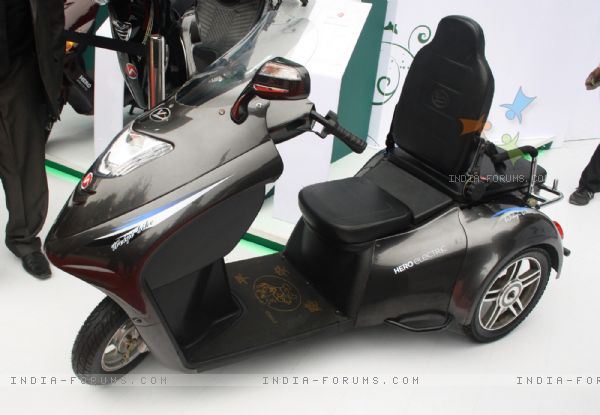Hero Electric has taken up the cause of solving this issue with its Optima Plus special ability electric scooter.
It also used the same 20 AH battery as the Optima Plus and due to its additional road contact patch and weight, is able to deliver a maximum of only 70 kms per charge. That is still a good range for an electric scooter so we feel that this is indeed a very well made scooter from Hero Electric.
Mr Sohinder Gill, CEO of Hero electric says - “One of the products that is waiting for clarification from the government for certification process is the special ability vehicle. This vehicle is so beautiful and easy to ride for a person who has some physical challenges. The government is still not clear how to certify it. As soon as it is certified, it will be on the road”.
Hero Eco, will be launching an electric motorcycle in 2017. The company has also developed a special ability vehicle which is waiting for certain government clarifications before it is finally launched in the country.
Mr Gill says - “From the flagship product we have an electric bike which will come out in 2017. We have developed the product, seen its performance, we are tweaking it and it is ready to go to ARAI for its six months testing”.
Gill said that his company has not been launching new products but has been definitely developing.
“The reason we have not been launching is because of the pricing. We have not kept our R&D sleeping over it. We have a range of products now after understanding the market,” he said.
In the meantime, the Finance Ministry has approved an interim National Electric Mobility Mission Plan (NEMMP) 2020 which would set aside Rs 1000 crore towards supporting the electric vehicle industry in the country. A majority of the Rs 1000 crore will be spent in directly making electric vehicle cheaper in the country through the subsidy route. Also, the government will, in the next two years, at least in pilot cities, set up charging infrastructure for electric vehicles.
With a subsidy in place, Gill informed that his company will in less than one year bring out a product with lithium ion battery. “For two wheelers there will always be a fair percentage of vehicles with lead acid batteries. This is because the cost to weight ratio and cost to savings ratio compares unfavorably even after subsidy for a lithium ion product for a two wheeler. Unless there is a high performance bike and a long range bike, lead acid batteries will continue. These batteries are also graduating on the technology front. We have adapted them to India conditions, Indian temperatures and Indian vibrations. The batteries have started performing much better that they used to four years back,” he noted.
I welcome Sohinder Gill’s plan to promote lead-acid battery and would also like to point out that Mahindra Reva switching from Lead-Acid (LA) to Li-Ion did not translate to 2x or 4x or 10x increase in sales. At the minimum the people could be given a choice between LA & Li-Ion and after a year or two the sales volumes can decide what to continue.
In my opinion that a good quality Indian brand LA battery combined with good, informed service support is sufficient to overcome any initial hesitance from the customer side. LA battery performance have been proved even in commercial operation via electric rickshaws. If these electric bikes & rickshaws come with Aluminum bodies it would increase the range too.

